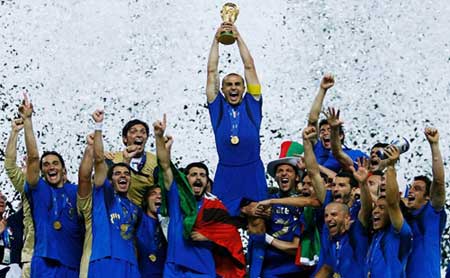世界杯游客,準(zhǔn)備好迎接巴西高物價(jià)!

|
Unlike nearby Latin American nations where a tourist's U.S. dollar or European Union euro seemingly stretches forever, Brazil is astoundingly expensive. If one's budget isn't immediately busted by the flight or the hotel, it will soon be done in by the $10 caipirinha cocktail, the $17 cheeseburger or the $35 pepperoni pizza. And those are the prices city-dwelling Brazilians saw even before the World Cup set off a new standard of sticker shock. ''Prices in Rio are absurd,'' Maria Anda, a Norwegian artist who has lived in Brazil for a year, said while enjoying the sunset on Ipanema beach. ''I still like it. It's worth being here, but it's not paradise.'' The dizzying prices are referred to here as the ''Custo Brasil,'' or ''Brazil Cost'' - the mixture of high taxes and steep import tariffs, combined with bad infrastructure, a dose of inefficiency and a thick shot of bureaucracy. Demand leading up to a big event like the World Cup naturally raises prices. But, since costs already were high to begin with, tourists should prepare to dig deep into their wallets and not be too miffed to receive goods or services of inferior quality, said Rafael Alcadipani, a business administration professor at the Getulio Vargas Foundation, Brazil's top think tank. ''Anything you buy in Brazil will be more expensive than in the United States or Europe, but the quality is going to be worse,'' Alcadipani said. Hotel rates in many of the World Cup host cities more than doubled ahead of the tournament. Massachusetts-based TripAdvisor reports visitors to Rio will face the highest prices, with hotel rates averaging $445 per night. Add in food and other expenses, and Rio travelers should prepare to spend $682 each day. Next costliest are Fortaleza and Manaus, where average daily expenses are estimated at $602 and $554, respectively. Even the more affordable host cities will set travelers back a good amount: $457 per day in Cuiaba and $477 in Sao Paulo. ''The Cup prices are ridiculous. Everything shot up. The only thing you can buy in Brazil is a bikini, a cachaca (Brazilian sugar cane liquor) and a pair of Havaianas (sandals),'' said Gillian Santos, a Brazilian who now lives in Belgium and was back in Rio on a recent visit. ''How do people afford things around here? As a Brazilian living abroad, I think it's outrageous.'' Experts say prices are kept high because supply can't keep up with demand. About 40 million Brazilians - a fifth of the population - joined the middle class in the past decade, on the back of strong economic growth and increased government social programs. Between 2009 and 2012, average annual income rose by more than 40 percent, from $8,140 to $11,630, according to the World Bank. For many, the new affluence sparked a spending spree. Brazil tries to protect its local industries by charging high tariffs on virtually all imported goods. For travelers who lose or forget an item, they might decide to do without rather than pay local prices. Take iPhones: The 5s that costs $199 in the U.S. has a starting price of $1,250 on Apple's Brazilian website. Need a pair of running shoes? A pair of the popular Nike Flyknit Lunar 2 runs about $313 at a Rio shopping mall - nearly triple the U.S. price. The examples go on. Levi 501 jeans start at $80. The $6.28 Big Mac is among the most expensive in the world. Shaving cream, soap, tissues, aspirin - all are double to triple the prices found elsewhere. ''Everything is expensive,'' said Nadir Fraguas, a retired bank employee who was at a Rio mall pondering whether to spend the equivalent of more than $100 on a Brazil national team jersey for her grandson. ''Clothing, cars and food... Here, you pay a lot and you get very little. Prices were already high, but now they're impossible.'' |
世界杯游客,歡迎來(lái)到足球之國(guó)——巴西,這里陽(yáng)光明媚,漫天高價(jià)。 游客用美元或歐元就可以在拉丁美洲的許多國(guó)家買(mǎi)到諸多廉價(jià)商品,但巴西則不盡然,它的物價(jià)高得出奇。 如果你沒(méi)有立即因航班或住宿超支的話,很快你就會(huì)因10美元的凱匹林納雞尾酒,17美元的吉士漢堡包或35美元的意大利辣香腸披薩而透支。這些就是巴西城市居民在世界杯之前看到的物價(jià),世界杯開(kāi)始后又會(huì)有新一輪的驚人標(biāo)價(jià)。 “里約熱內(nèi)盧的物價(jià)十分荒謬。”挪威的藝術(shù)家瑪麗·亞安達(dá)(Maria Anda)邊欣賞伊帕內(nèi)瑪海灘的落日邊說(shuō)道。她已在巴西生活了一年。“我仍喜歡這里。住在這里很值得,但是這里并不是天堂。” 這些令人眼花繚亂的價(jià)格被稱為“巴西成本”,是由高稅收,高進(jìn)口關(guān)稅,糟糕的基礎(chǔ)設(shè)施,低下的辦事效率和濃厚的官僚主義所造成的。 巴西智囊團(tuán)瓦加斯基金會(huì)的企業(yè)管理教授拉斐爾·阿卡迪帕尼(Rafael Alcadipani)說(shuō),像世界杯這類大事件會(huì)擴(kuò)大需求,自然也會(huì)使物價(jià)上漲。但是,之前物價(jià)就高居不下,因而游客應(yīng)準(zhǔn)備更多的資金,并且不要因買(mǎi)到劣質(zhì)的商品或得到差勁的服務(wù)就暴跳如雷。 “你在巴西購(gòu)買(mǎi)的任何東西,其價(jià)格都會(huì)比在美國(guó)或歐洲更貴,但是質(zhì)量卻更差。”阿卡迪帕尼說(shuō)道。 許多世界杯舉辦城市的房?jī)r(jià)都比之前錦標(biāo)賽的時(shí)候貴兩倍多。位于馬薩諸塞州的到到網(wǎng)聲稱去里約熱內(nèi)盧的游客將會(huì)面臨最高的房?jī)r(jià),平均每晚要花費(fèi)445美元。加上食物和其他的花費(fèi),去里約熱內(nèi)盧的游客要準(zhǔn)備好每天花費(fèi)682美元。 緊接在花費(fèi)最高的城市之后的是福塔雷薩和瑪瑙斯,這兩個(gè)城市預(yù)計(jì)每天要平均花費(fèi)602美元和554美元。即便是一些花費(fèi)更為便宜的舉辦城市,如庫(kù)亞巴和圣保羅,游客每天也需花費(fèi)457美元和477美元。 “世界杯時(shí)期的物價(jià)十分荒謬。一路飆升。你在巴西買(mǎi)得起的物品就是一件比基尼,.一瓶巴西朗姆酒(巴西的甘蔗酒精)和一雙人字拖鞋。”巴西人吉莉安·桑托斯說(shuō)道。她現(xiàn)在住在比利時(shí),最近返回里約熱內(nèi)盧。“人們?cè)趺茨軌蛸I(mǎi)得起這兒的東西?作為一名住在國(guó)外的巴西人,我認(rèn)為這太離譜了。” 專家說(shuō)物價(jià)高居不下是因?yàn)楣┎粦?yīng)求。巴西五分之一的人口也就是4千萬(wàn)的巴西人在十年內(nèi)成為了中產(chǎn)階級(jí),他們促進(jìn)了經(jīng)濟(jì)的強(qiáng)勁增長(zhǎng),增加了政府的社會(huì)項(xiàng)目建設(shè)。據(jù)世界銀行統(tǒng)計(jì),2009年至2012年期間,他們的平均年收入增長(zhǎng)了40%,從8140美元增加到11630美元。對(duì)于許多人而言,新增的財(cái)富點(diǎn)燃了他們的消費(fèi)熱潮。 巴西為了保護(hù)地方工業(yè),向幾乎所有的進(jìn)口商品收取高額關(guān)稅。那些丟了或忘記攜帶某件物品的游客,可能會(huì)就此作罷,不會(huì)在當(dāng)?shù)剡M(jìn)行購(gòu)買(mǎi)。 舉蘋(píng)果手機(jī)的例子來(lái)加以說(shuō)明:5s在美國(guó)售價(jià)199美元,而在巴西蘋(píng)果的官網(wǎng)上,起步價(jià)是1250美元。需要一雙運(yùn)動(dòng)鞋嗎?一雙流行的耐克Flyknit Lunar 2 runs系列的跑鞋在里約熱內(nèi)盧商場(chǎng)的售價(jià)約是313美元,幾乎是美國(guó)售價(jià)的三倍。 再舉些例子。李維斯501系列的牛仔褲起步價(jià)是80美元。麥當(dāng)勞巨無(wú)霸全球最貴,售價(jià)6.28美元。剃須膏,肥皂,阿司匹林這些物品的價(jià)格是其他地區(qū)的兩部至三倍。 “一切都很貴。”退休銀行職員那迪尓·弗拉瓦斯說(shuō)道。她曾在里約熱內(nèi)盧的商場(chǎng)考慮是否要花100多美元為她的孫子購(gòu)買(mǎi)一件巴西國(guó)家隊(duì)的運(yùn)動(dòng)衫。“衣服,汽車和食物……在這里,你花得多但得的少。過(guò)去物價(jià)一直很高,但是現(xiàn)在過(guò)猶不及。” (譯者 唐巧芳 編輯 齊磊) |
Australia had a bumpy ride through the Asian qualifying groups, losing to Oman and Jordan, En route to finishing second behind Japan to seal a world cup place. >詳細(xì)>>



